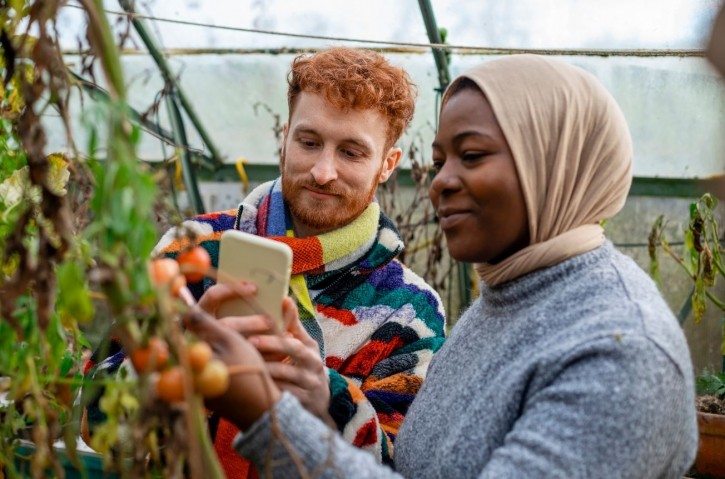From polluter to nurturer: How food and drink could save the planet

Between decarbonisation and increasing biodiversity, the food and drink industry is in prime position to make some of the biggest green gains.
“Food production can have an impact on biodiversity and ecosystems because they are closely interlinked,” explains Nature Positive associate director Tom Mason. “However, these supply chains play a critical role in delivering positive outcomes to biodiversity and ecosystems.”
At the beginning of the food supply chain, Mason explains, farmers are the “critical manager” of the world’s soil, a significant carbon sink, and land. This gives them direct control over how landscapes are used and maintained.
Agriculture, it is predicted, is responsible for around 80% of native habitat loss (FAO and TNC, 2021). So better control is necessary to not only protect plants and animals, but also global food supply.
Practices like regenerative agriculture, for example, are of growing importance to food and drink businesses' supply chains as well as their investors. This is because biodiversity loss and climate change are recognised as a “systemic risk to the entire food and beverage supply chain, and regenerative practices are viewed as a critical step in building supply chain resilience,” Mason maintains.
Regenerative agriculture focuses on reducing harmful chemical use, maximising land management practices – to promote healthy soil, clean water and disease resilience – and contributing to habitat creation and restoration within food and beverage supply.
How do birds and bees impact food production?
But why is it important for the food and drink industry – from farm to fork – to increase its biodiversity and environmental focus? And what impact can it really have?
It's important because the food and drink industry relies on a healthy environment for continued production and profitability. As bees, birds, bats, bugs and other pollinators directly contribute to between 5% and 8% of global crop production (WBCSD 2023), ensuring a mix of habitat is available helps to build pollinator populations and, logically, can improve yields. The decline in global pollinators is putting $577bn of crops at risk, the UN Environment Programme’s 'Facts about the nature crisis' report claimed.
In fact, the world’s three major food staples of rice, wheat and maize, already lose around 16% of production due to poor biodiversity, bad land management practices and invasive species, the World Economic Forum notes.
“Elsewhere in the supply chain, food processor and packagers also have tremendous opportunities to invest in circular economy initiatives,” continues Mason. “They can increase recycle rates, eliminate plastics – and therefore microplastics – from their products and packaging, they can introduce closed loop water systems to reduce water usage and invest in low carbon energy systems to reduce total emissions.”
In the two years to 2023, private equity firms have invested big sums – $1.4bn – into regenerative agriculture start-ups to help stem and reverse the negative impacts on biodiversity, according to an FT report.
Such investments aren’t for investors’ vanity alone. Regenerative agriculture practices in North America alone have increased supply chain resilience by around half, a Boston Consulting Group study for WBCSD showed.
Progress in biodiverse food processing
“The business case for the F&B sector, and by extension agricultural and food processing supply chains, is that a degraded natural environment is simply bad for business,” Mason explains. “Degraded ecosystems (soil and water quality, pollinator populations) require mitigation at additional operational expenses.”
Yet, progress in biodiverse farming would be counterproductive if efforts were not made further up the chain to counter the sector’s environmental damage through output. “The challenges of decarbonisation in the process industries are multifaceted,” says engineering consultancy firm Niras in its Decarbonisation in the process industries report. “They include the reliance on fossil fuels for high-temperature processes; the need for significant capital investment in new technologies; and the new complexities of integrating renewable energy sources.”
Ways to reduce and limit carbon output in food and drink manufacture include better energy management, through using energy-efficient tech and practices; optimising processes, such as reviewing and refining workflows; utilising renewable energy onsite or through suppliers; agreeing better practices with suppliers or sourcing from more sustainable suppliers; and consistently re-evaluating processes as well as bringing colleagues into the challenge to make better gains.
Manufacturers won’t be able to cut or significantly reduce carbon from all parts of the process. Transportation remains one of the more challenging areas, with the transportation industry – including that of food and drink production – accounting for over 7.3bn tonnes of CO2.
But producers can and have made gains, such as with lightening packaging, sending part-processed products to countries for finishing and packing, such as with some concentrated food and drink products.
“It’s really hard to pinpoint one [big] thing [for the F&B industry to focus on],” Mason says. “There’s a raft of things that need to be done at each stage of the supply chain. Agriculture operations need to prepare for future climate risks and mitigate risks, and downstream packagers and producers need to increase their circular initiatives to reduce [things like] water consumption.”
And while improvements have been made across the chain, much more needs to be done. But that is easier said than done, as Mason points out there remains a significant global funding gap into nature-based solutions, with most existing funding being focused on carbon reduction instead biodiversity too, though he recognises the importance of the former.









